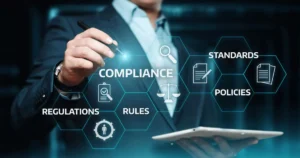Payment rebill is the practice of issuing a new billing document to replace an inaccurate or incomplete original invoice. This occurs when the original invoice contains errors such as incorrect charges, omitted fees, or misrepresented services
In such cases, the billing team voids the initial invoice and issues a corrected one, known as a “rebill.” This new invoice reflects the adjusted amounts to ensure the customer is accurately charged for the services rendered.
Rebilling is also necessary when changes occur post-fulfillment, such as unforeseen shipment charges or additional services requested by the customer. For example, a carrier might add unexpected costs, like fuel surcharges or customs fees, to the final bill or issue a separate invoice.
The primary purposes of rebilling are to ensure accurate record keeping and protect customers from overcharges. For vendors, it helps prevent revenue loss and issues related to inventory, logistics, or miscounted stock-keeping units (SKUs), while for buyers, it ensures they are only billed for what they receive.
Synonyms
- Reinvoicing
- Reissuing invoice
- Invoice correction
- Billing adjustment
- Recharging
- Corrective billing
- Amended invoice
- Billing revision
- Invoice update
- Recalculating charges
Circumstances That Require Payment rebill

Circumstances that require rebilling typically involve situations where the original invoice is inaccurate, incomplete, or needs adjustment. Here are the main circumstances:
Invoice Errors: Mistakes in pricing, quantity, taxes, or descriptions of services/products lead to rebilling. Correcting these ensures the customer is charged accurately.
Omitted Fees or Charges: If essential fees such as shipping, handling, or additional services are not included in the original invoice, a rebill is necessary to account for these missing charges.
Customer Disputes: When a customer disputes the charges on an invoice due to errors or overcharges, a rebill is often issued after the dispute is resolved.
Service Modifications: If the customer requests changes to the service or order after the initial invoice (e.g., upgrading or adding services), rebilling is needed to reflect the new charges.
Unexpected Costs: Additional costs incurred during service or delivery, such as customs duties, fuel surcharges, or expedited shipping, may require rebilling to cover these unanticipated fees.
Partial Fulfillment or Delivery Issues: When only part of an order is fulfilled or when there are delays or issues in delivery, the original invoice may need to be adjusted and rebilled.
Technical Errors: System glitches or data entry mistakes can result in an inaccurate invoice, requiring the billing team to issue a rebill to correct the issue.
Contractual Adjustments: If there are changes in a contract that affect the cost of services or products (such as contract renewals, price adjustments, or discounts), rebilling may be needed to update the invoice.
How to Streamline the Payment rebill Process

Run regular audits.
Regularly reviewing customer accounts, conducting audits for pricing discrepancies, and carefully verifying tax calculations can help avoid costly errors. Automating tasks such as invoice generation or Payment rebill processing can further minimize the risk of human mistakes.
In cases where rebilling is required, Payment rebill and payment reconciliation tools can automatically detect inconsistencies. These systems also make it simple to create and resend accurate invoices, ensuring any errors are quickly corrected.
Standardize the process for handling disputes
Even if a Payment rebill system doesn’t catch an error, customers are likely to spot it eventually, whether immediately or several months later as they review their expenses. They will likely reach out to address the discrepancy.
Having a standardized process for managing disputes can save considerable time and prevent chargebacks. To handle disputes effectively, companies should:
- Accept Inquiries: Provide a method for customers to submit disputes, such as an online form or portal.
- Process and Route: Ensure inquiries are directed to the right department for review and resolution.
- Evaluate Claims: Check the accuracy and legitimacy of the claims to determine their validity.
- Adjust Invoices: Issue new invoices or correct existing ones as necessary.
- Reissue Documents: Send corrected invoices or billing statements to the customer.
- Keep Customers Informed: Maintain clear communication with customers throughout the process, especially when making adjustments or issuing refunds.
Train your team
Make sure your billing team is well-acquainted with the software they use and provide them with ongoing training and support materials for handling rebilling situations. They should be comfortable adjusting bills for discounts, taxes, and other fees and be able to spot errors that might require a rebill.
Ensure they understand your company’s billing compliance requirements. Not all Payment rebill scenarios are straightforward; whether omitted charges or price changes are acceptable can depend on the customer’s situation. Provide resources so they can follow the correct procedures for payment reconciliation, pricing changes, and account adjustments.
Also, train them on your dispute management procedures. This will help them respond quickly and effectively when customers report billing discrepancies.
You can also read about alternativewaynet tech.
How Billing Software Ensures Accurate Billing

Real-Time Validation
Billing software often uses real-time data validation to catch errors as invoices are being created. Instead of waiting until after an invoice is generated, the software checks for inconsistencies and mistakes during the process.
It verifies details like item prices, quantities, and customer information against a database. If there are any discrepancies, it flags them before the invoice is sent out. Additionally, the
software can automatically apply discounts, fees, and taxes based on preset rules, ensuring everything is correct from the start.
Automated Reconciliation
Invoices are often tied to specific payment methods, such as credit cards or bank transfers. Smart billing systems use automated reconciliation tools to match payments with the correct invoices.
These tools can spot errors like double-billing, pricing mistakes, or incorrect customer details, and they often prevent these issues from happening in the first place. This helps avoid extra steps for customers, such as filing disputes or contacting you about incorrect invoices.
Tracking and Reporting on Both Ends
When a rebill is needed, billing systems often make it easy to modify existing invoices. They keep a record of the original invoice for auditing while quickly generating a new, corrected one. Many tools also automate communication, sending notifications when an invoice is adjusted or voided. This way, billing software keeps customers informed and ensures a smoother process.
Subscription Management
Subscription management involves overseeing and organizing the various aspects of recurring billing and customer subscriptions.Effective subscription management systems help businesses track subscriber information, such as Payment rebill details, plan changes, and usage patterns, ensuring that billing is accurate and timely.
These systems often include features for handling customer inquiries, processing upgrades or downgrades, and applying discounts or promotional offers.Effective subscription management not only streamlines operations but also helps build stronger relationships with subscribers by ensuring they have a positive and hassle-free experience.
You can also read about Tiger, YC back Rebill’s subscription payment platform.
FAQ’S
What is rebilling?
Rebilling is the process of issuing a new invoice to replace an incorrect or incomplete original invoice, often to correct errors or adjust charges.
Why might a company need to rebill a customer?
Rebilling may be required due to errors in the initial invoice, omitted charges, changes in service or product details, or discrepancies identified by the customer.
How is a rebill different from a refund?
A rebill corrects and replaces the original invoice with updated charges, while a refund involves returning money to the customer for previously paid amounts.
How can I request a rebill?
Contact the company’s billing or customer service department to report any issues with the original invoice and request a rebill.
Will I receive notification about a rebill?
Yes, you should receive a notification via email or through your customer account portal about the new invoice and any changes made to the original charges.
conclusion
Rebilling is the process of issuing a new invoice to correct an error or adjust charges from an earlier, incorrect invoice. This usually happens when the original invoice contains mistakes like incorrect charges or missing fees. The billing team will void the original invoice and create a corrected one, ensuring the customer is billed accurately.
In addition to correcting errors, rebilling can address changes that occur after the original invoice is sent, such as unexpected charges or additional services requested by the customer. Effective rebilling processes help prevent overcharges and ensure accurate record-keeping, benefiting both vendors and customers by keeping billing information precise and up-to-date.











